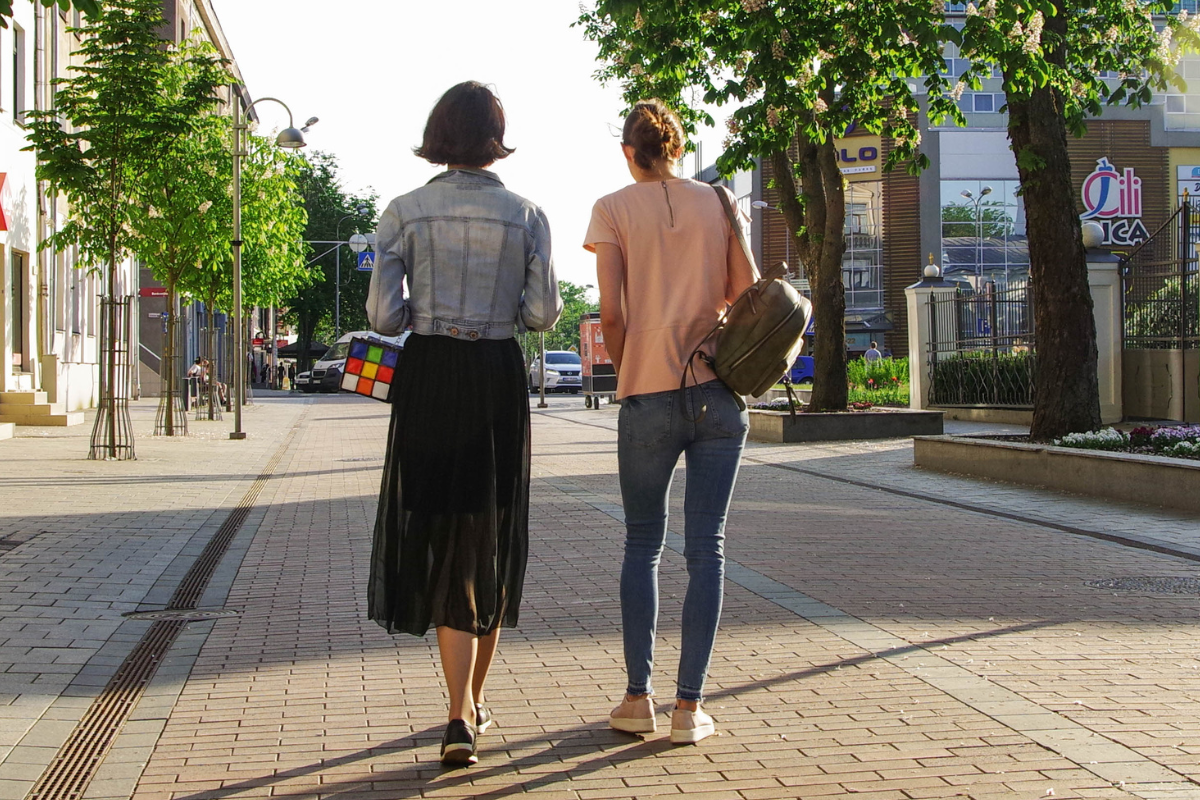

The Healthy Streets Approach – safe streets and healthy places for everyone
Healthy Families

These days, we live in a digital and convenience-based world – working or studying on computers, driving to and from places in cars, and finding our entertainment through TV, computer, and phone screens. We are more inactive than generations before us and more often than not this isn’t our choice; sometimes our environments just don’t give us the options to be more active (e.g. walking or cycling to school, playing outside etc).
Inactivity contributes to some of the biggest causes of illness and death around the world. In Aotearoa, obesity, high blood pressure, diabetes – all of which could be improved through physical activity - are within the top five causes of illness and death.
The Healthy Streets Approach is a human-centred framework for embedding public health and wellness in transport, public realm and planning. Using a systems change approach, Healthy Streets recognises the need to not only engage and work with communities but to support others working in the built environment space to embrace a 'people-first' perspective in their mahi.
Lead Systems Innovator for Healthy Families Ōtautahi, Maria Smolar, recently completed an eight-week long Healthy Streets Foundations Course facilitated by Lucy Saunders (creator of the Healthy Streets Approach), which helps enable participants to build skills and confidence to deliver a new approach to urban planning, prioritising the diverse needs of their citizens.
Smolar said that what really stood out to her about the course was how it focused on improving people’s experience of a place. “It took a holistic approach, recognizing that change happens at different levels and that we can work with communities to make a difference as well as support those who work in the built environment space to consider a 'people-first' perspective in their work. I also liked that it was practical and hands-on, giving us tools and frameworks we could easily use anywhere. It wasn't just theory; it was about actually doing things and trying them out to see what works".
At the conclusion of the course Smolar, along with Cassie Welch from Te Mana Ora – Community Public Health who also completed the course, presented to Sport Canterbury to raise awareness of the Healthy Streets Approach, and why we need it from a public health perspective. The presentation touched on why Healthy Streets are needed, what even IS a Healthy Street, and was accompanied by facts and figures supporting the need to explore options e.g. the five major impacts of urban transport on human health, how many of the top causes of illnesses and premature death in New Zealand link to inactivity[1], and that 58% of all car travel in Ōtautahi is less than 5km![2]
Ōtautahi is laid out in a way that amenities such as the GP, pharmacy, schools etc can be reached, on average, in fifteen minutes by walking – with parks and Early Childhood Education centres walkable to in up to ten minutes. Supermarkets are, on average, the furthest to walk to at just under 20minutes away – even if just a few trips to these places were made by walking or cycling rather than car would have significant positive impacts on population health.
Of course, everyone has different abilities and barriers when it comes to transport and for some, driving might be a necessity for a variety of reasons (e.g. a disability, or taking care of dependents) – Healthy Streets isn’t about getting rid of every car and motor vehicle out there; it is about enabling other ways to get around and therefore increasing incidental walking and cycling.
The presentation concluded with a walk around the surrounding area using the Healthy Streets Index to see how “healthy” streets currently are. There are ten identified indicators that gauge the health of a street or built environment – indications include whether there is shelter and shade, easy to cross, not too noisy, and whether everyone feels safe, relaxed and welcome.
A working group has been formed on the back of the course and the presentaion – the group, called Play Environments/Healthy Streets, has representation from Christchurch City Council, Te Mana Ora - Community Public Health, Sport Canterbury, Play, and Healthy Families Ōtautahi. The group meet every six weeks and are now in the early stages of working with community groups in the South Brighton area on a Healthy Streets Pilot.
Every decision made about our built environment (e.g. streets, parks, public places), no matter how small, is an opportunity to deliver better places for people to live in and thereby improve their health.
Article added: Friday 19 May 2023

